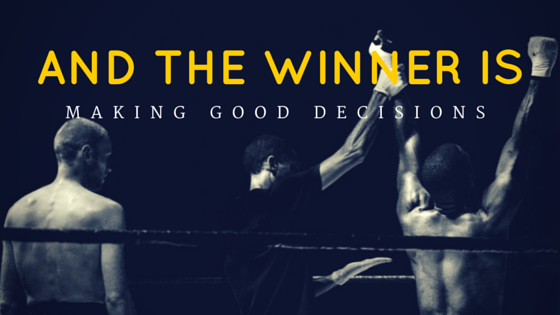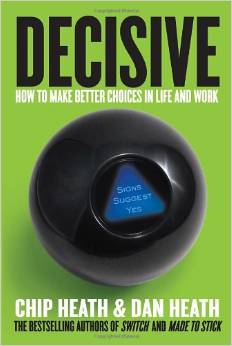
My wife and I are in the process of deciding whether to buy the house that we currently renting or find another one. We’ve gone for a walk nearly every evening over the past two weeks and discussed some of the following factors in our decision:
- What is the value of our current house?
- How will a move affect our social lives?
- How will a move positively or negatively affect our children?
- How much money should we spend on a house?
- What do we like about our current house?
- Will our kids be able to stay in their school if we move to another neighborhood?
- How much space do we really need?
- How do we balance wants vs needs?
As you can imagine, it is easy to feel like we are spinning on a merry-go-round as we consider the thousands of various scenarios that are possible. When I go though situations like this, my brain feels tired and my emotions drained. I anxiously browse through real estate sites hoping that the decision will suddenly appear before me as I find the “perfect” solution.
It’s during times like this that I must remind myself of some of the keys to making good decisions. The best resource I’ve read on decision-making is the book Decisive; How to Make Better Decisions in Life and Work by brothers Dan Heath and Chip Heath. So, for your sake and mine, I’ll review three of their tips and, maybe, by the end of this blog post, I’ll know what to do about buying a house.
Tip #1: Widen Your Options
We often get stuck in tough decisions because we have too narrow of a focus and rather than thinking creatively, we end up feeling torn between two options, neither of which feel right. To overcome this challenge Dan and Chip suggest that we must go from narrow to wide in our thinking. For example, let’s assume that my wife and I were considering a move because our house was too small and we were trying to decide to we stay or buy a larger home. That would be a “narrow frame”. To widen our options we might consider other alternatives like finishing the basement, knocking out a wall or shipping my teenager off to live with grandparents (OK, just kidding on that last one). In other words, try and avoid “whether or not” or “this or that” decisions. Think outside of the box. Even if you still end up choosing one of the original two options, you will be thinking more creatively.
Tip #2: Reality Test Your Assumptions
Rather than trying to make decisions based on conjecture or biased information, we should seek to gather information through first-hand experience. There are two great ways to do this.
The first is to talk with others who have gone through a similar experience. For my wife and I, this would mean talking to friends who have recently moved. What did they find helpful? What was difficult? By asking them questions we might clear up some of our uncertainty or gain new information.
The second way of testing reality is to do something called “ooching.” To ooch is to conduct a small experiment. My favorite example given by the Heath brothers is the of a company hiring a new graphic designer. The typical approach to this decision is to interview a large number of applicants and view their portfolios of work. While this may help weed out those who are clearly not qualified, it may not help you make a difficult decision between 3 equally qualified applicants. The way around this dilemma? The company hired all three graphic designers for one project. They asked all three designers to complete the identical project with the same information and same deadline. In fact, they paid all three. The designers then had a chance to design under real-time pressures and for a real project. This allowed the company to get a sense of how the applicants communicated, how they responded to pressure and what type of product each designer delivered. By ooching they had a great deal more information on which to make a hiring decision.
Tip #3: Attain Distance
Sometimes we are too close to a decision to think clearly about it and we need to back away in order to see clearly. A simple way of doing this is to ask yourself the question, “What would I tell a friend to do in this same situation?” Surprisingly, this will often bring an answer to mind immediately.
For more difficulty decisions you can use the 10-10-10 method. It works by asking yourself, “If I decide to (buy a new house) how will I feel about it in 10 days, 10 months or 10 years?”
Recently, when I was having a tough time deciding what kind of car to buy I used this approach. While I wasn’t sure how I would feel in 10 days or 10 months (that would decide on how the car was running) but, when it came to 10 years, I thought to myself, “It won’t really matter all that much which car I buy.” This helped me to relax and not put so much pressure on myself to make the “exact right decision.”
Are you in the middle of a tough decision? Try these tips. Widen your options and think more creatively. Reality test your assumptions by ooching and finally, attain some distance and gain a little perspective. To learn more, I highly recommend buying the book Decisive.


